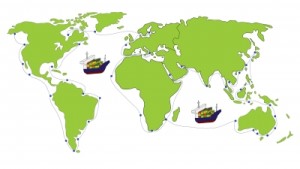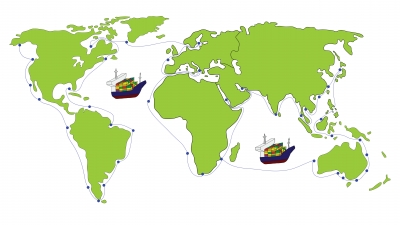 Philippine ports are ready to cope with higher cargo volume following passage of the Foreign Ships Co-Loading Act, according to the Philippine Ports Authority (PPA).
Philippine ports are ready to cope with higher cargo volume following passage of the Foreign Ships Co-Loading Act, according to the Philippine Ports Authority (PPA).
PPA general manager Atty. Juan Sta. Ana, in a statement, said that PPA has been continuously improving the capacity and capability of Philippine ports in anticipation of the Association of Southeast Asian Nations Economic Community integration next year, and that “those measures somehow help the state-owned agency adjust easily” to Republic Act (R.A.) No. 10668, or “An Act Allowing Foreign Vessels to Transport and Co-load Foreign Cargoes for Domestic Transhipment and for Other Purposes.”
Sta. Ana noted that Philippine ports have been ready even prior to the signing of R.A. 10668. “The major gateways have long been capable of handling bigger ships and our secondary gateways are being improved to handle international vessels.”
He added that while PPA expects that the effects of the foreign ships co-loading law “will not immediately trickle down to port operations, our ports will not have a hard time adjusting to expected influx of vessels and cargoes in the different ports.”
The main Philippine gateways where foreign-flag ships dock include the Manila International Container Terminal and Manila South Harbor, Batangas Port, Port of Davao, Makar Wharf in General Santos, Iloilo Port, Zamboanga, Ozamiz, and Cagayan de Oro. Other government ports where ships also call include Cebu and Subic Bay.
These ports handle about 90% of the total cargo movement in and out of the Philippines; of the total, Manila ports corner about 85%. The remaining 10% are scattered in other private ports like the Manila Harbour Centre, PPA said.
PPA ports record volume gains
In the first four months of the year, cargo volume handled by PPA ports reached 66.60 million metric tons (mmt), 6.34% higher than the 62.63 mmt posted in the same period of 2014. Domestic cargoes registered a 6.87% hike to 27.75 mmt from only 25.97 mmt in the January to April 2014 period.
Foreign cargo volume inched up 5.97% to 38.85 mmt from 36.66 mmt a year ago. Import volume rose 7.69% to 22.21 mmt from 20.63 mmt in 2014, while export volume increased 3.75% to 16.63 mmt compared to the 16.03 mmt posted in 2014.
Substantial increases were observed in the ports of Cotabato, Surigao, and Agusan, which are secondary international gateways that posted growth of 436.26%, 75.63% and 55.15%, respectively, due to the increase in the volume of domestic cargoes.
The North Harbor is the top performer with a share of 8.19 mmt of total cargo volume nationwide, followed by Batangas with 7.79 mmt, Bataan/Aurora with 6.15 mmt, and Davao with 4.14 mmt.
Private ports handled 41.21 mmt or 57.38% of the total cargo volume nationwide, while government ports accounted for 25.39 mmt or 42.62%.
Containerized cargoes, meanwhile, jumped 9.45% to 1.90 million twenty-foot equivalent units (TEU) in the January-April 2015 period from 1.73 million TEUs in 2014.
Foreign containerized volume posted a 10.6% hike in the first four months of this year to 1.14 million TEUs from 1.03 million TEUs in the previous year. Import boxes registered a 5.56% hike to 554,849 TEUs from 525,626 TEUs, while export boxes posted the highest growth with a 15.78% hike from 510,798 TEUs in 2014 to 591,410 TEUs for the period.
Domestic boxes, on the other hand, also inched up 7.76% to 757,065 TEUs from 702,531 TEUs last year.
The North Harbor continues to rank first in volume of domestic containerized cargo handled during the period with 353,128 TEUs. MICT, on the other hand, continues to handle the largest volume of foreign containerized cargo with 650,629 TEUs, followed by South Harbor with 280,736 TEUs and Batangas with 49,055 TEUs. The Sasa Wharf in Davao, which used to rank third after North Harbor, posted 32,295 TEUs only as of end April due to the existing condition of the port, while private commercial ports in the area showed an increase in TEU volume indicating diversion of container traffic from the government port to the private ports.





